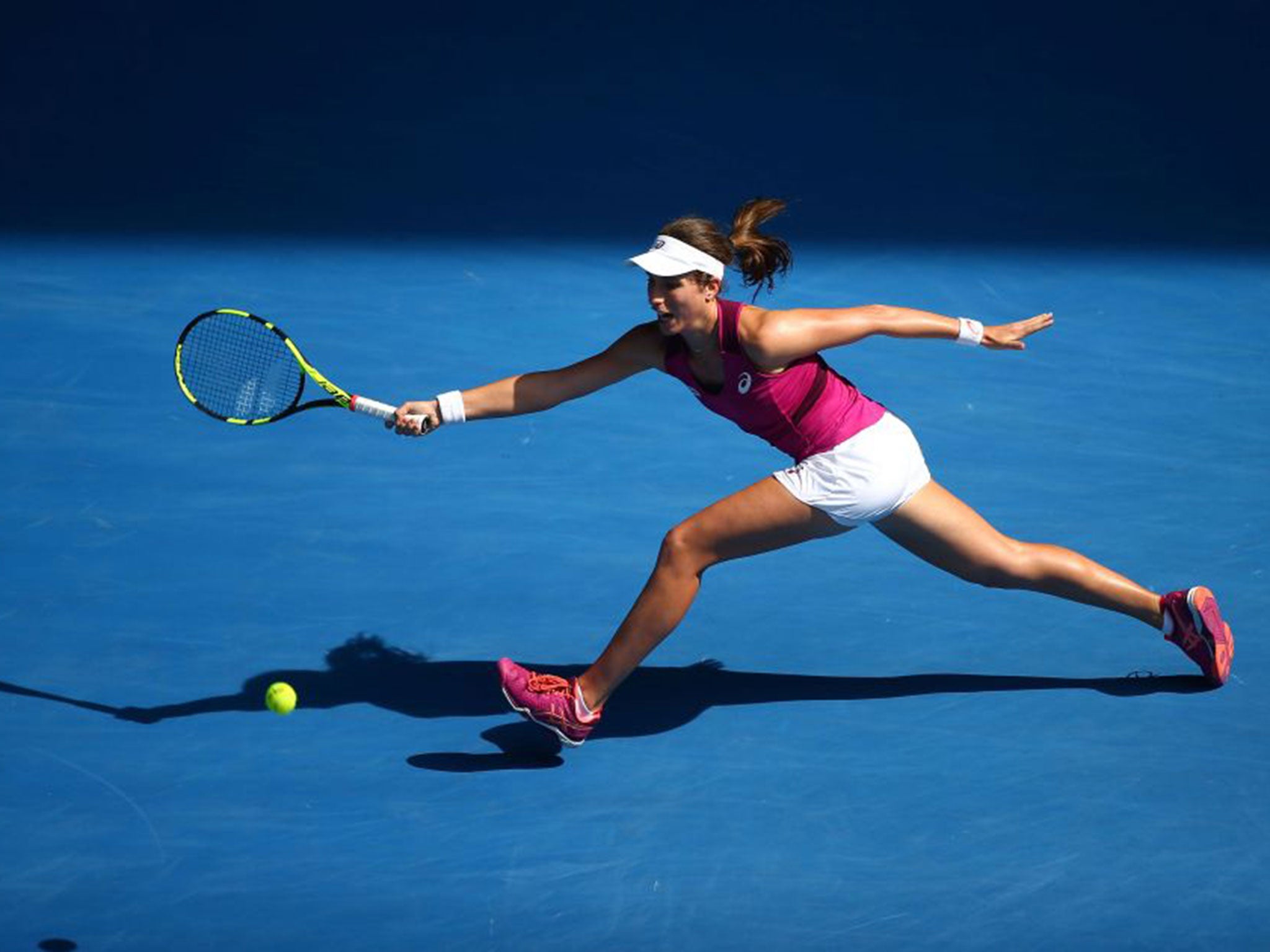Australian Open 2016: Five reasons why Johanna Konta can be a contender for major honours
The Briton impressed on her way to the semi-finals in Melbourne and is now all but unrecognisable from the player she was just two or three years ago

1. There may soon be a vacuum at the top – and Konta is one of several who could fill it
Given how easily Serena Williams beat Agnieszka Radwanska in the Australian Open semi-finals here it might be tempting to suggest that the world No 1 can reign for years to come, but even the 34-year-old American will slow down one day soon, especially given the suspect state of her knees.
Maybe Williams will call it a day when she has no more major records left to beat: she will equal Steffi Graf’s Open era mark of 22 Grand Slam titles if she beats Angelique Kerber in tomorrow’s final and would then be only two short of Margaret Court’s all-time mark.
Of the other players in the world’s top 10, Flavia Pennetta has retired, Venus Williams is 35, Maria Sharapova and Lucie Safarova will turn 29 in the coming weeks, Petra Kvitova (25) seems to be dogged by injury and illness and Kerber (28) and Radwanska (26) may already be at the height of their powers.
That leaves Garbine Muguruza (22) and Simona Halep (24), the Wimbledon finalist in 2015 and French Open finalist in 2014 respectively, as perhaps the only top 10 players who have their best days ahead of them. The opportunity is there for a younger generation to break through, with Belinda Bencic (18), Madison Keys (20) and Karolina Pliskova (23) among those best placed to make their mark.
Might 24-year-old Johanna Konta join such elite company before too long? Statistically there is every reason to believe she can soon rise higher than No 28 in the world, which is her projected ranking next week after her stunning run here, which finally ended with a 7-5, 6-2 defeat by Kerber in the semi-finals.
Konta has few points to defend until the summer and her climb up the rankings will ensure that she earns direct entry to the biggest tournaments. She should be seeded at the French Open and Wimbledon and can pick up significant ranking points at both following her first-round exits last year.
2. Physical strength is a prerequisite in the modern game – and few are tougher than Konta
The best demonstration of Konta’s strength came at last year’s US Open, when she beat Muguruza in gruelling heat and humidity after three hours and 23 minutes, which made it the longest women’s singles match in New York for 45 years. Her victory here over Ekaterina Makarova, at three hours and four minutes, was the second longest women’s singles match of this year’s Australian Open.
Spending the first 13 years of her life in Australia and some of her teenage years training in Barcelona has left Konta well equipped to deal with hot conditions. You rarely see the British No 1 tiring in matches.
Konta has a potent serve and her forehand carries weight. The average speed of her forehand here has been timed at 73mph, which puts it on a par with Serena Williams’.
3. She has mental strength too – and lots of it
Konta is all but unrecognisable from the player she was two or three years ago, when she often seemed to wilt in situations where she was expected to win. Contrast that with the cool-headed way in which she saw off Zhang Shuai, the world No 132, in the quarter-finals here. She would probably make a good poker player given that her expression rarely changes in matches.
Her transformation has come about thanks in large part to the work of her main coach, the laid-back Esteban Carril, and her mind coach, Juan Coto. They have helped her develop the ability to focus only on the present moment.
Konta’s mantras can be frustrating for journalists looking for easy sound bites. She talks about wanting simply to be “the best I can be” rather than giving herself specific targets and about being “in the moment” rather than looking ahead. “I’m going to win Wimbledon, roars Konta” is not a headline you will be reading in the future.
4. She is clever – on the court and off it
Konta’s intelligence away from the court is clear, but she also shows it in matches. She rarely chooses the wrong shot, constructs her points well and knows how to play to her strengths. Some of her play can verge on robotic, but that’s not wrong if it works.
5. She has the game to succeed
The modern game is all about strength and athleticism. Most matches are won from the back of the court by keeping rallies alive then having the power to hit winning shots or force the opponent into mistakes.
Finesse can help but is not a match-winning quality in itself. If there is plenty of scope to bring more subtlety into Konta’s game – her volleying can improve and she lacks the creative touch of a player like Radwanska – her physical attributes are major compensations.
While Konta’s strength is a huge asset, she will be well aware that bodies can break down. Azarenka has not been the same since a foot injury sidelined her for nearly a year. Closer to home, Laura Robson’s rise to a career-high position at No 27 in the world rankings three years ago is becoming a distant memory as a result of the wrist problems which have cast doubts on whether she will ever play at the top level again.
Subscribe to Independent Premium to bookmark this article
Want to bookmark your favourite articles and stories to read or reference later? Start your Independent Premium subscription today.

Join our commenting forum
Join thought-provoking conversations, follow other Independent readers and see their replies